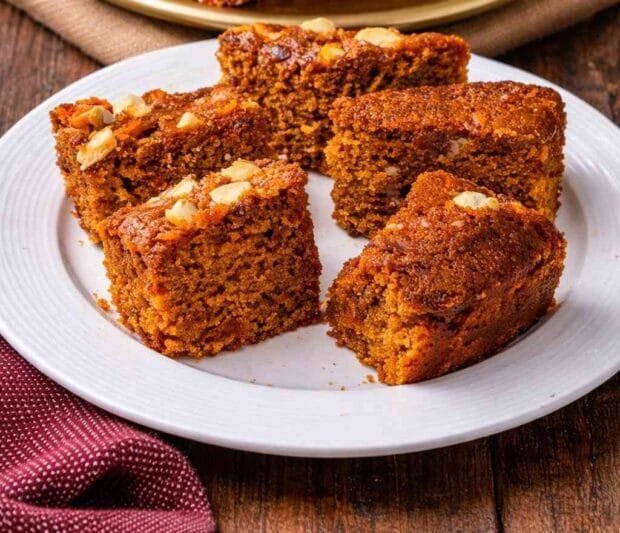There’s something so homely about a pot of Mutton Biryani slowly cooking away on the stove. The warm aroma drifting from the kitchen, the gentle hiss of the dum lid, and the excitement of everyone waiting for the first serving—it all makes the house feel cosy instantly. Whether it’s a relaxed Sunday with family or a busy midweek evening when you need something hearty and satisfying, Mutton Biryani always brings a little joy to the table. Tender marinated mutton, long-grain Basmati rice, golden fried onions, ghee, and spices that smell like pure celebration turn an ordinary meal into something special. Across India, countless variations exist, but the soul of a good biryani stays beautifully consistent: thoughtful layering, slow cooking, and flavours that taste like time, care, and tradition.
Why Mutton Biryani Is So Loved
The charm of Mutton Biryani lies in the way simple ingredients transform into something deeply flavourful. Marinating the mutton with yogurt, ginger-garlic paste, turmeric, and fresh herbs helps it soak up flavour while becoming wonderfully tender. As the Basmati rice parboils with whole spices, each grain gains a gentle fragrance even before forming the layers. Then comes the most exciting part—the assembling. Layers of mutton, rice, fried onions, mint, coriander, and ghee come together in delicious stacks that fill the pot. Once sealed and cooked on dum, the flavours blend into a warm, aromatic dish that feels both festive and comforting. A final touch of fried onions and herbs adds crunch and brightness. With a bowl of raita or a simple salad, it becomes a complete meal everyone enjoys.
Ingredients for Mutton Biryani
For Marinating the Mutton:
• 500 grams mutton (goat or lamb), cut into pieces
• 1 cup thick yogurt (curd)
• 1 tablespoon ginger-garlic paste
• 1/2 teaspoon turmeric powder
• 1 teaspoon red chilli powder
• 1 teaspoon garam masala
• Salt to taste
For Cooking the Rice:
• 2 cups Basmati rice
• Water for soaking and boiling
• 2–3 green cardamom pods
• 2–3 cloves
• 1-inch cinnamon stick
• Salt to taste
For Biryani Layering:
• 2 large onions, thinly sliced and fried until golden brown (birista)
• Fresh mint leaves
• Fresh coriander leaves
• 2 tablespoons ghee (clarified butter)
For Assembling and Dum Cooking:
• 2–3 tablespoons vegetable oil
• 2–3 green chillies, slit
• 1/2 teaspoon cumin seeds
• 1/2 teaspoon fennel seeds
• 1 bay leaf
• 1/2 cup warm water
How to Make Mutton Biryani at Home
1. Marinate the Mutton
Place the mutton in a mixing bowl and add yogurt, ginger-garlic paste, turmeric, red chilli powder, garam masala, and salt. Make sure each piece is coated well. Once mixed, cover the bowl and let it rest for at least 2–3 hours. Overnight marination gives the most tender and flavourful results.
2. Prepare the Rice
Rinse the Basmati rice gently until the water becomes clear, then soak it for 30 minutes. Bring a pot of water to a boil and drop in the soaked rice along with the cardamom, cloves, cinnamon, and salt. Cook until the grains reach around 70% doneness, then drain and set aside.
3. Layer the Biryani
Heat oil in a heavy-bottomed pot. Toss in the cumin seeds, fennel seeds, bay leaf, and green chillies, allowing them to release their aroma. Add the marinated mutton and let it cook for 5–7 minutes until lightly browned. Take out a small portion of the mutton for layering later. Begin with a layer of mutton at the base of the pot, followed by rice. Sprinkle fried onions, mint, coriander, and a drizzle of ghee. Continue layering in this pattern, finishing with rice on top.
4. Dum Cooking
Smooth the surface gently. Drizzle the warm water over the top layer. To trap the steam, seal the pot with dough or use a snug-fitting lid. Let it cook on the lowest flame for 45 minutes to 1 hour (or bake in a 150°C oven). Once ready, open the pot carefully and fluff the biryani gently with a fork.
5. Serve and Enjoy
Finish with more fried onions, mint, and coriander. Serve hot with raita or a crisp salad. Even though Mutton Dum Biryani takes a little time, the fragrant, flavourful result is always worth the effort. It’s the kind of dish that brings the whole family together and turns any meal into a happy memory.






